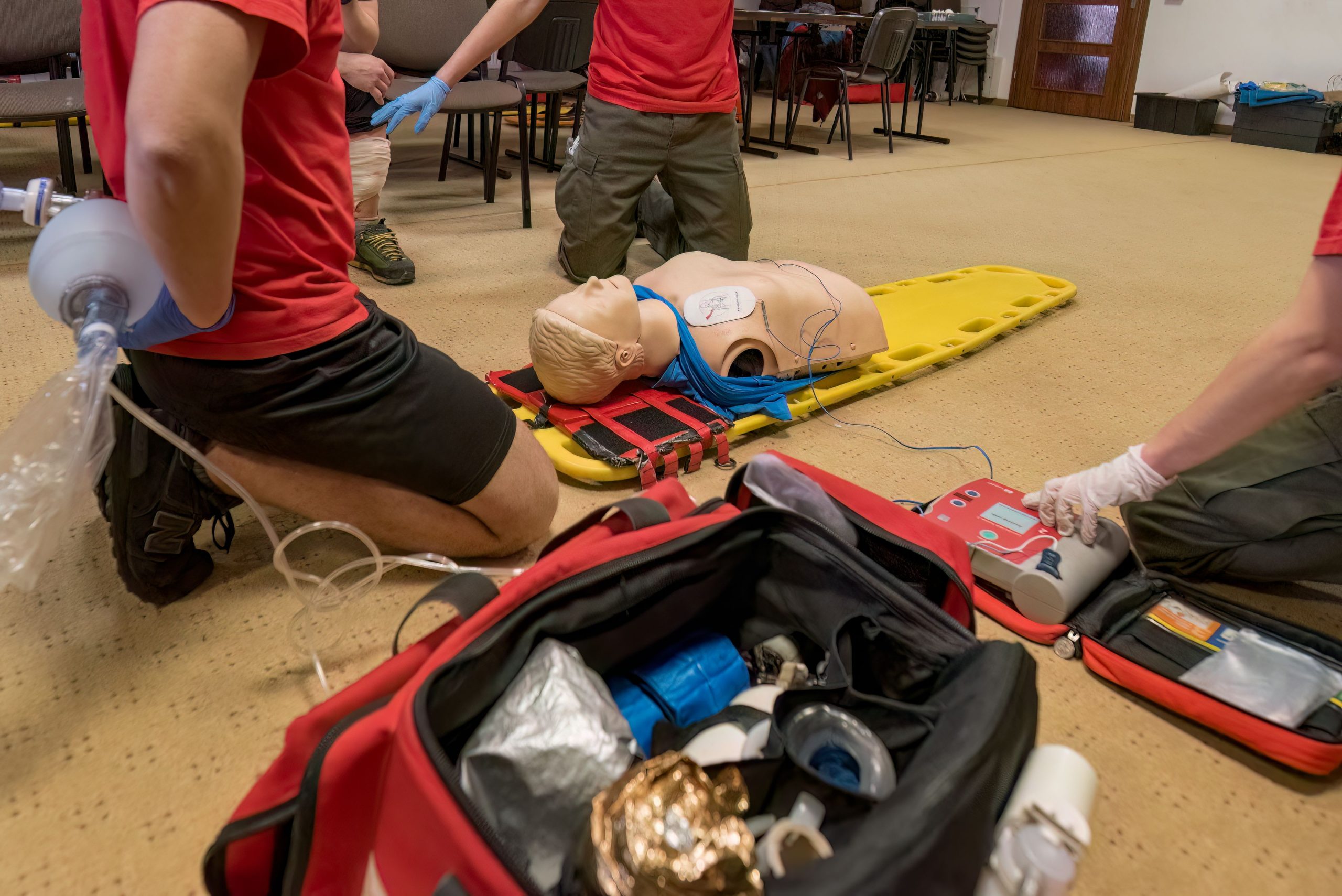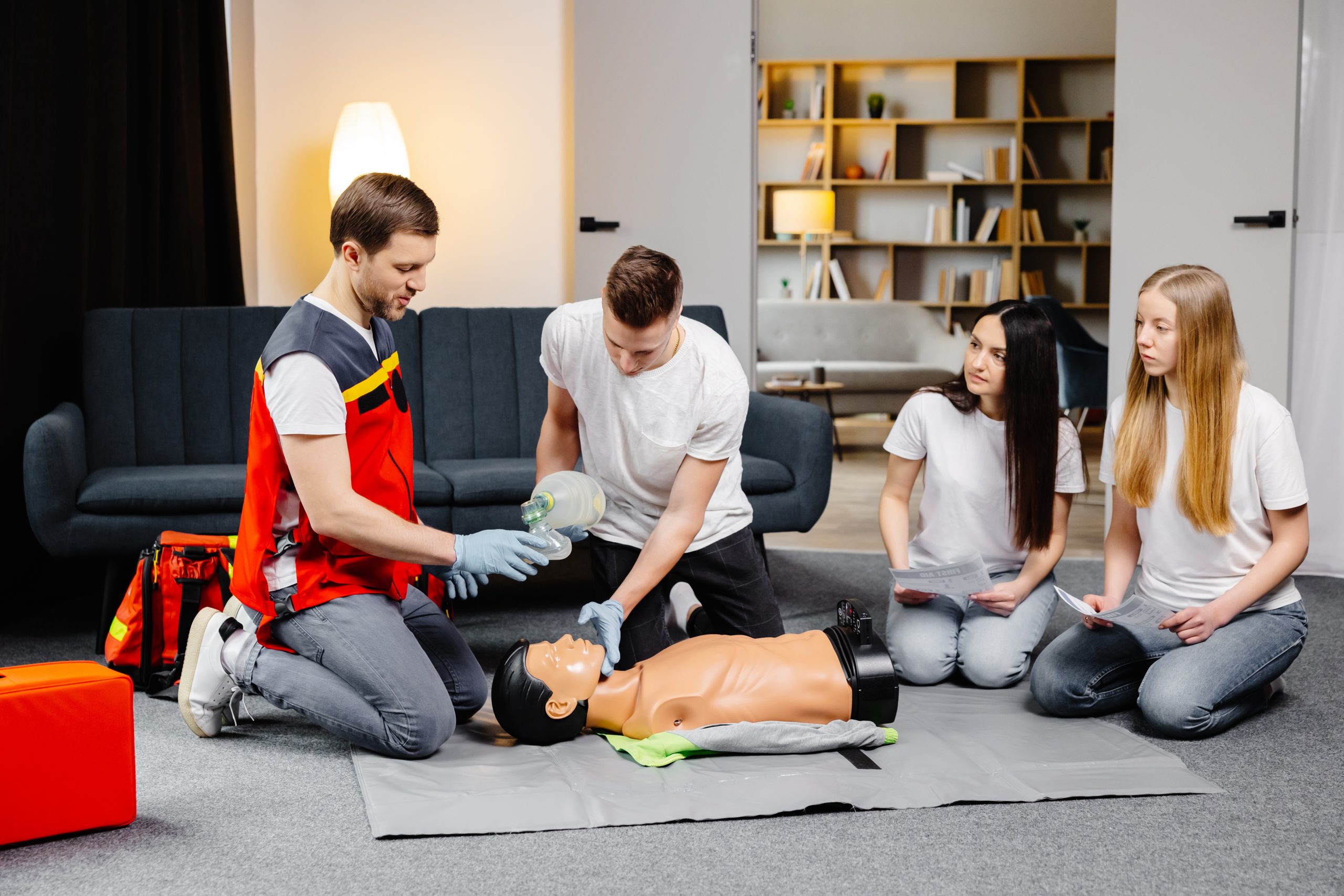
Cardiopulmonary Resuscitation, more commonly known as CPR, is an invaluable skill. It’s a technique that can make the difference between life and death during a medical emergency. While many people have heard of CPR, fewer understand exactly what it entails or how to perform it correctly. This guide is designed to demystify the process, especially for those living in or around Austin, Texas. We’ll explore what CPR certification truly means, why it’s a skill everyone should consider learning, and how you can take the first step towards becoming a certified lifesaver right here in your own community.
What Exactly Is CPR?
CPR is an emergency procedure that combines chest compressions and rescue breaths. The goal is to manually maintain brain function until further medical intervention can take place. When a person’s heart stops beating, they are in cardiac arrest. This means their blood is no longer circulating, and oxygen is not reaching the brain and other vital organs. Time is of the essence in these situations. Brain death can occur in just a few minutes without oxygen. Performing CPR correctly helps to circulate oxygenated blood to the brain and heart, buying precious time until paramedics arrive.
Why Does CPR Matter So Much?
The importance of CPR cannot be overstated. Sudden cardiac arrest is a leading cause of death, and it can happen to anyone, anywhere, at any time. The vast majority of cardiac arrests occur outside of a hospital setting. This means that the first person on the scene is often a bystander—a family member, a coworker, or a stranger. In these critical moments, a person who knows CPR can become a hero. Immediate CPR can double or even triple a person’s chance of survival. Simply put, a certified rescuer has the power to save a life.
Beyond the immediate life-saving potential, being CPR certified provides a significant boost in confidence. You will know that you have the skills to handle an emergency, and you will be empowered to act rather than stand by helplessly. This confidence extends to your professional life as well. Many professions, including healthcare providers, teachers, lifeguards, and coaches, require CPR certification as a standard part of their job. Having this certification on your resume can make you a more desirable candidate and open up new career opportunities.

The Breakdown of CPR Certification
CPR certification is the official recognition that you have completed a CPR training course and have demonstrated competence in both the knowledge and practical skills required. It’s not just about watching a video; it’s about hands-on practice and proving that you can perform the steps correctly. A typical certification course will cover several key areas.
First, you will learn to recognize the signs of a cardiac arrest and how to assess the scene for safety. This crucial first step ensures that both the rescuer and the victim are safe. Next, you will be taught the proper technique for chest compressions. This includes the correct hand placement, depth, and rate of compressions. A good instructor will provide ample opportunity for you to practice on a manikin until you get it right. You will also learn about rescue breaths and when they are appropriate to use. Modern CPR protocols often emphasize hands-only CPR, but a comprehensive course will cover both.
Finally, a certification class will also cover how to use an Automated External Defibrillator (AED). An AED is a portable electronic device that can analyze the heart’s rhythm and, if necessary, deliver an electrical shock to restore a normal heartbeat. Knowing how to use an AED is a critical component of modern CPR and significantly increases the chances of survival. Upon successful completion of a written exam and a skills test, you will receive a certification card. This card is your proof of training and is typically valid for two years, after which you will need to renew your certification.
Finding CPR Certification in Austin
Austin is a vibrant city with a strong sense of community, and that community includes a network of certified trainers ready to teach you these vital skills. When searching for a class, you have several options. You can choose a traditional in-person class, which offers the most direct hands-on practice and instructor feedback. This is often the preferred method for many people. There are also blended learning options, which allow you to complete the theoretical portion of the course online at your own pace before attending a shorter, in-person session for the skills practice and testing. This flexibility can be a great benefit for busy schedules.
No matter which format you choose, it’s important to select a provider that offers courses that are nationally recognized and compliant with the latest guidelines. These guidelines are updated regularly to reflect the most current scientific research. A reputable training provider will also have certified and experienced instructors who can make the learning process engaging and effective.
What to Expect During Your CPR Class
Stepping into a CPR class for the first time can feel a little intimidating, but there’s no need to worry. The environment is designed to be supportive and educational. Your instructor will walk you through each step of the process in a clear and easy-to-understand manner. You’ll likely start with some foundational knowledge, such as the anatomy of the heart and lungs and the chain of survival.
The majority of the class will be dedicated to hands-on practice. You will work with manikins to practice chest compressions and rescue breaths. The instructor will observe your technique and provide personalized feedback to ensure you are performing the skills correctly. This practical component is what truly prepares you for a real-life emergency. You will also get the chance to practice using an AED, learning how to place the pads and follow the device’s voice prompts.
The final part of the class will involve a skills test and a written exam. The skills test is where you demonstrate your ability to perform the CPR steps correctly and confidently. The written exam will test your theoretical knowledge. Passing both of these components means you have successfully met the requirements for certification.

The Role of CPR in Our Community
In a city like Austin, where people are active and events are constantly happening, the potential for an emergency is always present. From music festivals and sporting events to busy downtown streets and local parks, having a community of CPR-certified individuals is a powerful asset. Bystanders are often the first to arrive on the scene of a cardiac arrest. The quicker a person receives CPR, the better their chances of survival. By getting certified, you are not only preparing yourself but also strengthening the safety net of the entire Austin community. You become a resource, a potential lifesaver for your family, friends, and neighbors.
Conclusion
CPR certification is more than just a piece of paper; it’s an investment in yourself and your community. It’s a skill that empowers you to act decisively and confidently in a crisis. The knowledge that you could potentially save a life is a profound and rewarding feeling. Whether you are seeking certification for your job, for your family, or simply because you want to be prepared, there has never been a better time to get started. Don’t wait for an emergency to realize the importance of this skill. Take the proactive step today to become a certified rescuer.
If you are ready to take the next step and find a CPR class in Austin, we are here to help. Contact CPR Classes Near Me today to learn more about our available courses and get on the path to becoming certified. Your community needs you.
FAQs for CPR Certifications in Austin, TX
Q: How long does a CPR certification last?
A: CPR certifications are typically valid for two years. After this period, you will need to take a recertification course to refresh your skills and stay current with the latest guidelines. This ensures that certified rescuers are always up-to-date with the most effective techniques.
Q: Can I get CPR certified online?
A: You can complete the theoretical portion of a CPR course online through a blended learning program. However, a hands-on, in-person skills session is required to receive an official certification. This is because a certified instructor must observe and confirm that you can perform the techniques correctly on a manikin.
Q: Is CPR different for adults, children, and infants?
A: Yes, there are significant differences in the techniques used for adults, children, and infants. A comprehensive CPR course will cover these variations, including differences in compression depth, hand placement, and rescue breath volume. It is crucial to be trained in the appropriate age group you may encounter.
Q: What is the difference between CPR and first aid?
A: CPR (Cardiopulmonary Resuscitation) is a specific emergency procedure used when someone’s heart has stopped beating. First aid is a broader term that refers to the initial care given to an injured or sick person before professional medical help arrives. First aid can include everything from treating a cut to managing a broken bone. Many certification courses combine CPR and First Aid training.
Q: Do I need to be a healthcare professional to get certified?
A: Not at all. CPR training is designed for everyone, from healthcare professionals to laypeople. There are different levels of certification, such as “Basic Life Support (BLS)” for healthcare providers and “Heartsaver” for the general public, but the foundational skills are taught to anyone who wishes to learn.

Leave a Reply